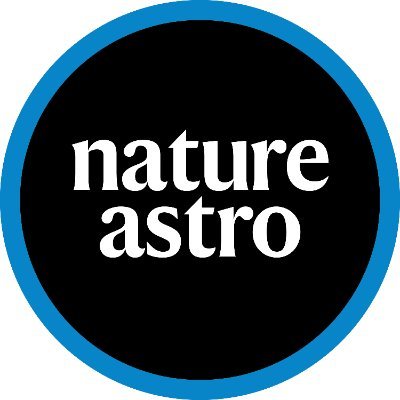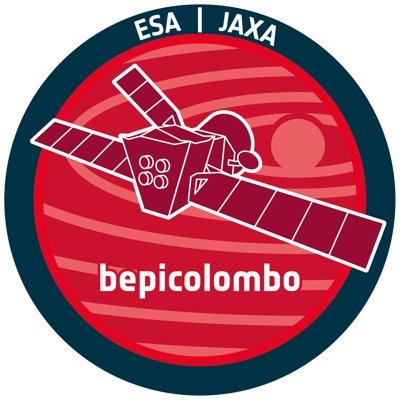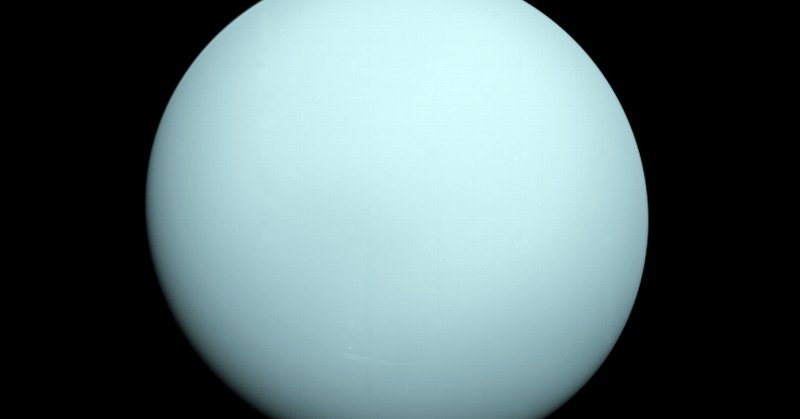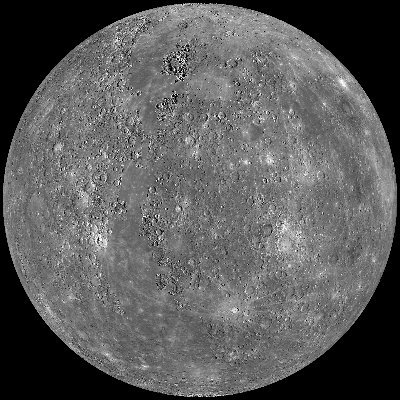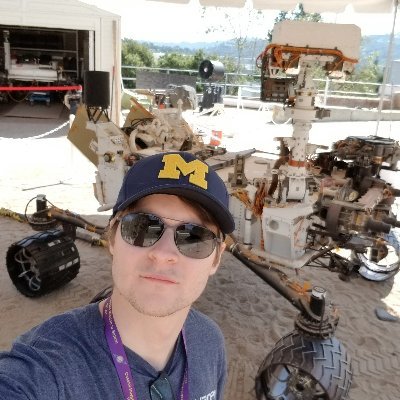
Dr Jamie Jasinski
@spaceJamieJ
Followers
96
Following
21
Media
3
Statuses
34
Space Plasma Physicist at @NASAJPL. Planetary interactions with space plasmas.
Joined July 2020
A nice summary of our paper that came out last month!
A study in @NatureAstronomy reveals that Voyager 2's 1986 flyby of Uranus — which formed much of the scientific understanding of the planet —might have occurred under rare conditions, leading to a potentially skewed understanding of the planet's magnetosphere. @NaturePortfolio
1
0
3
Scientists are mining the mysteries of Uranus. (Yeah, we said it.) Almost 40 years ago, @NASAVoyager got a close look at Uranus for the first time—but a new analysis is helping explain a few of the planet's unexplained oddities: https://t.co/h90is9buAi
375
940
6K
Great to see this work led by CPS alumus Dr Jamie Jasinski @spaceJamieJ @NASAJPL, including CPS co-authors Dr Will Dunn @astro__will and Prof Nick Achilleos and CPS alumni Dr @Tom_Nordheim @NASAJPL and Dr Leonardo Regoli @JohnsHopkins APL 👇 https://t.co/yyoo7RYOtu 🌞 🧲 🪐🤩
1
2
6
When Voyager 2 flew past Uranus in 1986, the planet's magnetosphere seemed super weird. There was no plasma, and the radiation belts were mega intense. Now we might know why, because of rare solar activity hitting the planet. Story by me @nytimes
https://t.co/AtvJZtVGkC
nytimes.com
Much of the understanding of the seventh planet comes from a brief flyby nearly 40 years ago, which researchers now say overlapped with an exceptional solar event.
0
2
6
My excellent friend @spaceJamieJ discovered that lots of Uranus's mysterious behaviour that we've talked about for decades, based on Voyager 2s flyby, happened during really extreme solar wind conditions. It's out today here: https://t.co/0taEEwX5ev . May be some news coverage.
nature.com
Nature Astronomy - A reanalysis of the Voyager 2 flyby of Uranus shows that it occurred during an extreme compression of the planet’s magnetosphere by the upstream solar wind. This would have...
0
3
10
A reanalysis of the 1986 Voyager 2 flyby of Uranus shows that it occurred during an extreme compression of the planet’s magnetosphere by the solar wind. This would have had significant effects on the measurements made during the flyby. @spaceJamieJ et al.: https://t.co/Bexf06nbR7
1
34
106
When @NASAVoyager 2 flew by Uranus in 1986, it provided our first — and, so far, only — close glimpse of this strange outer planet. Scientists are still analyzing the data from that flyby, and one researcher recently found a surprise:
jpl.nasa.gov
NASA’s Voyager 2 flyby of Uranus decades ago shaped scientists’ understanding of the planet but also introduced unexplained oddities. A recent data dive has offered answers.
12
47
273
First look at the Solar System's innermost planet from today's #MercuryFlyby, including the recently named "Challenger Rupes" in anticipation of the scarp being well seen this flyby 🤩 https://t.co/eoI8jGOuXA
#ExploreFarther
10
370
1K
Part of the @PlanetEnviroOU corridor now features 3 completed #Mercury geological maps by @OU_SPS and 3 by our Italian colleagues. 3 more are underway here @planmap_eu @ESA_Bepi
0
12
25
Planetary Decadal Survey is out and recommends Uranus Orbiter+Probe as #1 priority. https://t.co/h7ohskbVjZ
science.org
“Decadal survey” recommends $4.2 billion flagship mission to the ice giant
0
0
0
Check out my 3 talks at AGU this year: SM53C-04: Photoionization at Mercury's Exosphere SM43B-01: Reconnection at Saturn P52B-09: Neptune's pole-on magnetosphere Can I now call myself a collector of planets? 😂
0
0
3
A great paper I had the pleasure to co-author, led by Diego Janches @NASAGoddard
How do meteoroids shape exospheres on airless bodies? Janches et al. review @MESSENGER2011 observations of #Mercury and @NASAMoon LADEE observations of the #Moon + dynamical models to explore this complex question! Read on:
0
0
0
Ever wondered what processes produce Mercury's sodium exosphere? Check out the schematic from a paper I led that has now been published in GRL which discusses the exosphere and the role of photoionization. Paper link: https://t.co/7oeTnQ1jnu
@ExploreMercury @NASAJPL @LASPatCU
0
1
5
I need to permit myself a little self-promotion.... my first first-author paper has recently been accepted to JGR Space Physics! Typeset and formatted version coming soon :D https://t.co/6SSOwU0ZwY
#Jupiter #EuropaMoon
3
2
27
Temperature isn't the only thing changing during the seasons...@spaceJamieJ et al. analyzed how the amount of sodium lost due to photoionization varies throughout a year on #Mercury using @INSU_CNRS #Themis telescope and @MESSENGER2011 data. Read on:
0
1
2
Our recent study understanding flux ropes at Saturn's dayside magnetopause was recently published in @theAGU JGR: Space Physics Journal at https://t.co/XwhjYytbTP
@PlanetAndrewC @NASAJPL @umclasp
1
6
12
Very cool press release from @JHUAPL about our work, @jim_raines @Tom_Nordheim @PlanetAndrewC @NASAJPL @ExploreMercury
https://t.co/tp1ynuQK8U
jhuapl.edu
A team of physicists that includes Johns Hopkins APL’s Leonardo Regoli reveals in a recent study that the Lab-operated MESSENGER spacecraft witnessed a meteoroid impact on the planet Mercury more...
0
6
11
@spaceJamieJ et al. identified enhancements of neutral particles from Mercury's exosphere at high altitudes in MESSENGER data. This can only be explained by a micrometeroid impacting the surface of #Mercury! #AGU20
0
2
1








